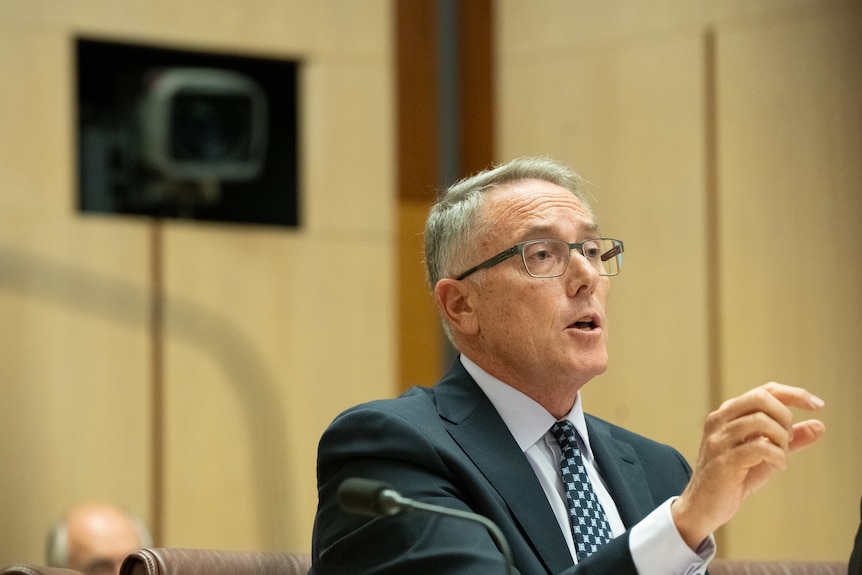In the midst of broadcasters and pay TV groups competing for screen space, a Network Ten executive has acknowledged the challenge of locating her channel’s TV app on a smart TV.
Is the Government Trying to Regulate Your TV Viewing Experience?
The largest media corporations in the country are currently engaged in a fierce competition for broadcasters’ screen space. This battle revolves around how TV apps are displayed to viewers, with companies arguing that certain apps are receiving preferential treatment, posing a challenge to fair competition.

**Support for Changes in Broadcasting Landscape**
**Broadcasters Screen Space Competition**
ABC managing director David Anderson expressed his support for the bill, emphasizing the need for the proposed changes to be implemented earlier than the suggested 2026 timeline. He highlighted the importance of adapting swiftly to the evolving broadcasting landscape.
**TV App Challenge**
Anderson also advocated for the inclusion of search and recommendation functions in the prominence proposal. These functions would enhance the visibility of Australian broadcasters on search results, providing them with a competitive edge in the digital space.
He noted that while ABC programs were easily accessible through the search function on certain TVs, they were virtually invisible on others. For instance, when searching for the popular children’s TV show Bluey, some televisions prioritized the option to watch it for free on ABC iview, while others directed viewers to a paid service.
**Ensuring Visibility for Australian Content**
Anderson underscored the significance of ensuring that Australian content, including local news and children’s programs, is easily discoverable by audiences. He emphasized that integrating search and recommendation features into the prominence framework is essential for promoting homegrown content effectively.
By addressing the challenges posed by broadcasters’ screen space competition and the TV app challenge, Anderson highlighted the need for proactive measures to support Australian broadcasters in an increasingly competitive digital landscape.
Foxtel CEO Discusses Blurring Lines Between Free and Paid TV
In the realm of broadcasters, the distinction between free-to-air and paid TV is increasingly ambiguous, according to Foxtel Group CEO Patrick Delaney. He highlighted the argument put forth by some Pay TV companies and streaming platforms that Australian channels should not receive preferential treatment in TV app search results. This contention arises from the fact that digital offerings from these channels are not subject to the same regulations as their traditional broadcast counterparts.
Delaney emphasized that the competition for broadcasters’ screen space is intensifying, with free-to-air networks venturing into the realm of paid digital services and acquiring interests in streaming entities. As a response, Foxtel’s platforms are committed to displaying search results that encompass both free and paid content.
While advocating for transparency in search results, Delaney cautioned against manipulating outcomes to artificially elevate free content, citing a misalignment with user preferences. He noted that individuals primarily seek specific shows and events, indifferent to the distinction between free or paid, live or recorded. The key expectation is accessibility to all options when interacting with a device.

Broadcasters Screen Space Competition in the TV App Challenge
Patrick Delaney highlighted the blurring lines between free and paid services in the broadcasting industry. He emphasized the need for regulation if free-to-air networks are granted easy access for their Broadcast Video On-Demand (BVOD) services. Delaney suggested that BVOD platforms should be regulated similarly to broadcast channels to ensure fairness.
“If free-to-air networks are given the privilege of easy access, they should be subject to regulations,” Delaney stated. He pointed out that as viewership shifts from linear channels to BVODs, there should be requirements for Australian content and drama creation on these platforms.
Delaney expressed concern over the lack of Australian content on some BVODs that still receive prominence. He argued that favoring one platform over another creates an uneven playing field in the industry.
Representatives from Netflix also weighed in on the issue, agreeing that prioritizing free-to-air content could disrupt viewing habits. Netflix’s policy advisor, Carolyn Hough, emphasized the importance of viewers maintaining control over their content choices rather than having the order of content regulated.
“Preserving flexibility and allowing devices to adapt dynamically is crucial,” Hough emphasized. She raised concerns about the potential limitations on consumer experience if free-to-air content is consistently ranked first in search results.
Hough further argued that prioritizing free content could complicate viewing experiences for users who access programs on both free and paid platforms. She stressed the importance of consumers being able to make their own viewing decisions.
The committee is set to review proposed anti-siphoning laws aimed at safeguarding iconic sporting events from being hidden behind paywalls, further highlighting the ongoing competition for screen space among broadcasters in the TV app challenge.
For more information on broadcasters screen space competition and the TV app challenge, please visit our site 60time.com. Don’t forget to follow us on social media at Facebook for the latest updates.



